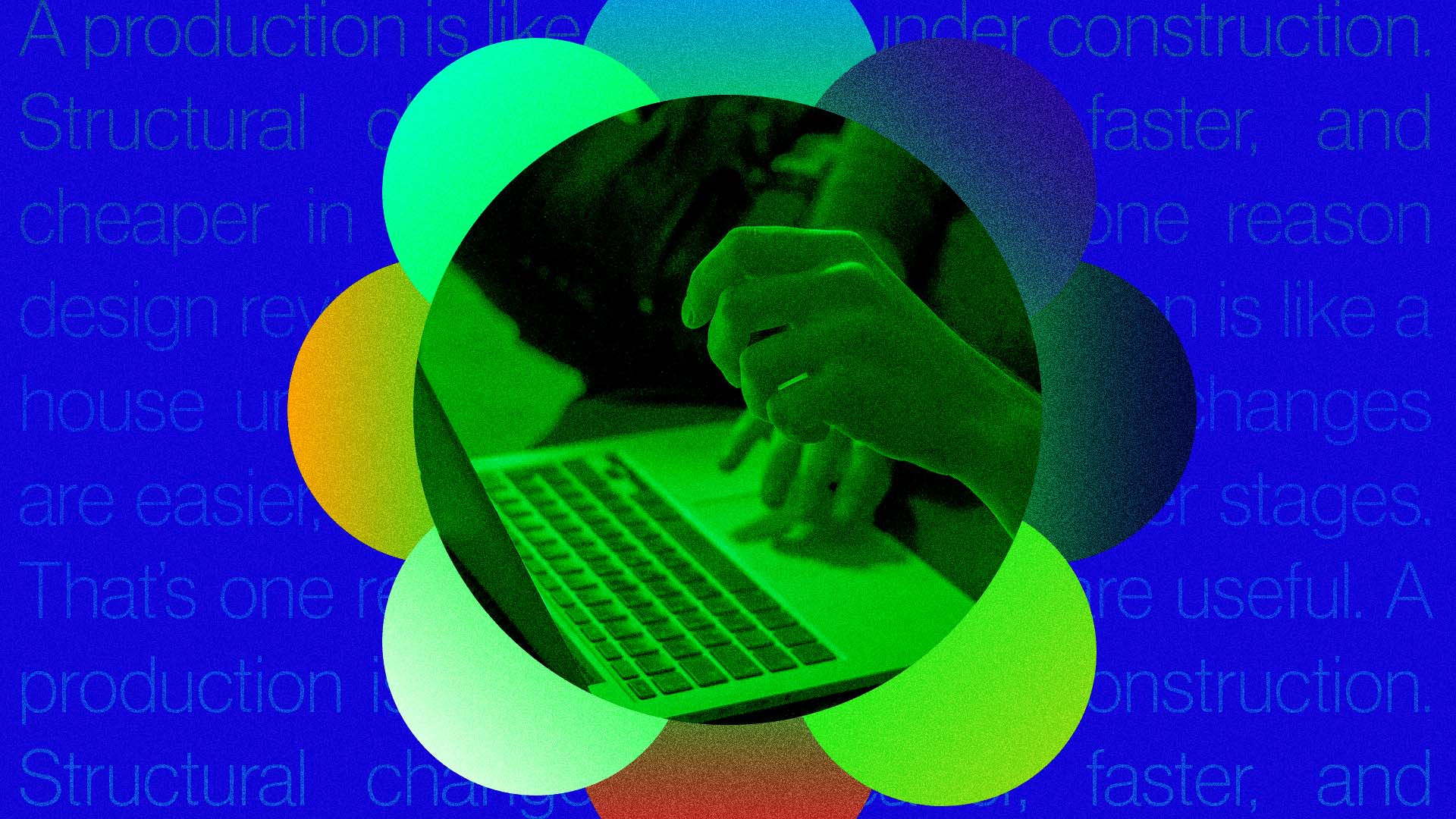What is a design review?
Feedback processes are an important part of digital projects. These include websites, mobile apps, publications, animation, film, and branding projects.
Good design reviews are productive, swift, and even enjoyable. Unstructured design reviews can waste resources and cause delays. They are among the large risks to good results.
Design review participants can include supervisors, clients, digital product users, test audiences, designers, project managers, and funders. They can also include any audience who may influence a production. The right mix of participants saves resources.
Good project communication indicators!
Preparation results in better, more productive, and faster design reviews. Preparation includes meeting invitations, meeting agendas, and clear guidelines for reviews. Tools such as these set clear expectations.
For a digital team, design reviews are important moments to align stakeholders’ perspectives. Design reviews take place in person, on video, phone, WhatsApp or email. Faces and voices can be helpful.
When design reviews happen
Design reviews are ideal when scheduled before a resource-intensive production phase. For instance, a publication design team may schedule a design review to present design samples before the production of the full publication.
Below are instances when design reviews can be most useful:
- To agree on a publication’s color palette, font hierarchy, and page layouts before full production
- To review animation storyboards before full production
- To agree on website wireframes before the full design
- To review a brand toolkit before circulation among a marketing team
Great production teams have systematised predictable, repeatable design review processes. They have systematised excellence in design and also in teamwork and customer service.
Predictable process
Good design reviews are usually predictable and, where possible, concise. They focus on the achievement of positive results.
Poor design reviews are unpredictable. They may actually lead to worsened results.
Chronically mismanaged design reviews are major barriers to production quality and customer experience.
What presenters should bring to design reviews
- Guiding hand approach to agenda-setting and time-keeping
- View of feedback as essential to good production
- Clear expectations so that all parties understand the difference between good and poor design reviews
- Reassurance to design review participants who may be unfamiliar with digital
Good versus poor design reviews
Good design review
- Has an agenda
- Involves the right people, including producers
- Is delivered through the most appropriate channel (in person, video, phone, Slack, WhatsApp message, email)
- Clearly explains the review process
- Explains the differences between constructive and destructive reviews
- Enables candor and a critical friend approach
- Values all perspectives
- Records review in formats that enable swift edits
- Provides options for additional time to consider responses
- Actively seeks out introversion and uncertainty
- Instils confidence
- Concludes positively with a clear plan
- Supports good customer service
Poor design review
- Has no agenda
- Does not present a clear vision
- Does not set clear expectations
- Feedback may be unscheduled, unpredictable, conflicting, and arriving from unannounced parties
- Feedback may be unproductive, personal, unspecific
- Prioritizes certain participants’ opinions over others
- Does not offer enough material for users to interact with
- Risks death by committee
- Invites micromanagement
- Adds uncertainty
- Does not conclude positively
What designers should consider before a design review
- Do all design review participants have all the necessary info to participate effectively?
- Do other participants know their responsibilities for this design review?
- Is anyone excluded from this design review?
- Will this design review include the right attendees?
- Is it consistent? Are all sizes, shapes, colors, sounds, and effects correct?
- Are all elements readable, accessible, and inclusive?
- Are all fonts, backgrounds, buttons, illustrations, icons, cover pages, logos, and other visual elements correct?
- Is the text all correct?
- Have we done everything to make the design review productive?
Remember: A production is like a house under construction. Structural changes are easier, faster, and cheaper in earlier stages.
The cost of edits
Unanticipated feedback is a natural feature of digital projects. They are more apparent on longer-term projects. This is due to factors such as participant turnover, unexpected events, and evolution in perspectives. Time-consuming change requests should be minimized where possible.
The same feedback given at different stages may require significantly varying costs. Below are case studies of identical change requests at different points in a digital production.
Example: toolkit design
- Changes to text at the proofreading stage = 1+ hours for a content writer
- Changes to text at the pre-printing stage = 1+ hours for designer(s), 1+ hours for a content writer
- Possibly 2x difference in resourcing
Example: animation
- Changes to the script at the scripting stage = 0.5 to 1 hour for the content writer
- Changes to the script at the animation stage after script, storyboards, and illustrations = 05. to 1 hour for the content writer, variable hours for a voice actor, variable hours for the audio producer, variable hours for animator(s), several hours wait time for each specialist to be available
- Highly variable increased costs
Example: website
- Changes to the design at the concept stage = 1+ hours for the digital project lead
- Changes to the design at the post-launch stage = 1+ hours for the digital project lead, variable hours for the website designer, variable hours for the website developer, variable hours for quality assurer, several hours wait time for each specialist to be available
- Highly variable, possibly exponentially increased costs
Everyone wants a productive, swift, possibly even enjoyable design review process.
Final takeaways for great design reviews
- Design reviews should explore why a design element works or does not work so that producers can clearly understand the next actions
- Design reviews are important, but so is open communication between project participants
- Guest Slack channels and WhatsApp groups are also great. The combination of great structured design reviews and open communication is excellent
- Late-day and late-stage or unanticipated design reviews can be draining

